Privacy has become a pressing concern in today’s digital age, especially with the proliferation of audio recording devices. These devices, ranging from smartphones to hidden microphones, pose significant risks as they can capture sensitive conversations without consent. Whether you’re in a business meeting, at home, or in any private setting, the potential for unauthorized audio recording is a real threat. Understanding how to block audio recording devices is crucial to safeguarding your personal information and maintaining confidentiality.
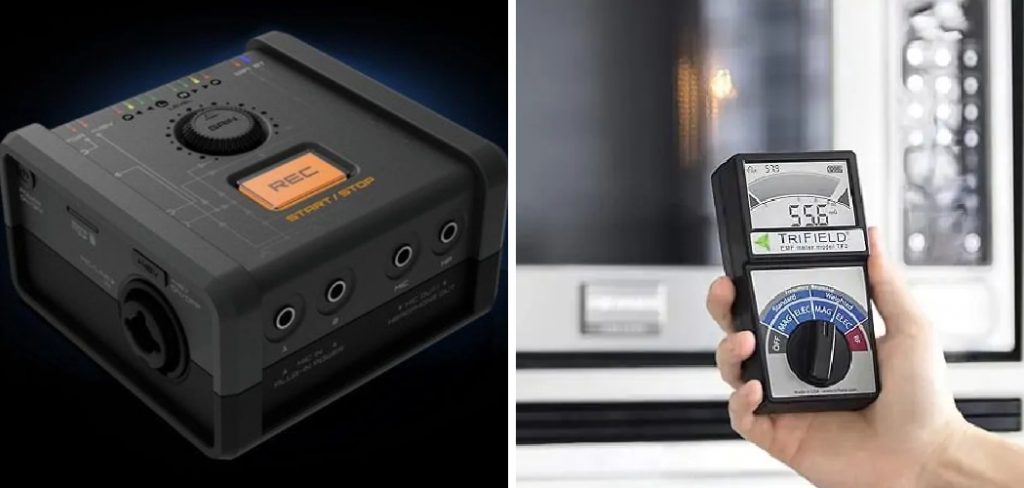
This article will outline various methods and strategies to detect and obstruct these recording devices, including soundproofing techniques, the use of white noise generators, and executing electronic countermeasures. By implementing these measures, you can ensure a higher level of privacy and security in your daily life.
Understanding Audio Recording Devices
There are several types of audio recording devices that you may need to be aware of, each with its unique characteristics and methods of operation. Digital recorders are common tools that store audio input in digital formats on internal or external memory cards. With their ubiquitous presence, smartphones have built-in microphones and numerous recording apps that can discreetly capture conversations. Hidden microphones, often used in surveillance, are designed to be inconspicuous and can be integrated into everyday objects like clocks, pens, or even smoke detectors.
These devices capture sound through their microphones, converting analog sound waves into digital signals. The signals are then compressed and saved as audio files. The storage medium varies depending on the device but typically includes flash memory cards or internal storage.
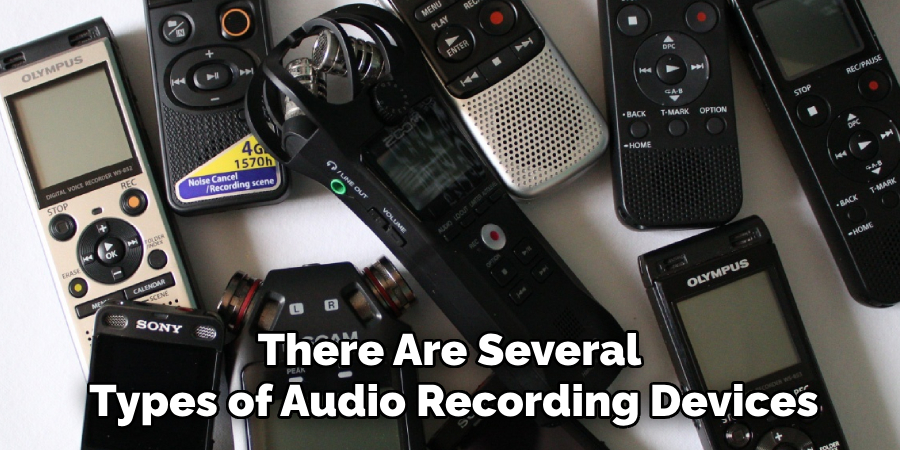
However, it’s essential to consider the legal and ethical implications of using audio recording devices. In many jurisdictions, recording someone without their explicit consent is illegal, leading to potential criminal charges and civil liabilities. Ethically, non-consensual recording breaches trust and privacy, underscoring the importance of understanding and complying with relevant laws and respecting individuals’ rights while addressing security concerns.
Tools and Materials Needed
- List of Tools: RF (Radio Frequency) detector, white noise generator, audio jammers
- List of Materials: soundproofing materials (acoustic panels, curtains, carpets), electronic devices
- Optional: Faraday bags, anti-spy software
Detecting Audio Recording Devices
Step-by-Step Guide to Detecting Hidden Recording Devices
Identifying hidden audio recording devices involves a systematic approach to ensure thorough detection. Follow these steps to effectively locate and disable any concealed devices:
- Using RF Detectors to Locate Hidden Microphones and Transmitters:
- Turn on the RF Detector: Begin by turning on the RF (Radio Frequency) detector, ensuring its sensitivity settings are appropriately adjusted.
- Scan the Room: Move around the room slowly, scanning all areas including walls, furniture, and electronic devices. Pay close attention to places where microphones and transmitters are likely to be concealed.
- Monitor Signals: Watch for any spikes or unusual signals on the detector, which could indicate the presence of a recording device.
- Conducting a Physical Inspection of the Room or Area:
- Check Common Hiding Places: Conduct a meticulous physical inspection, focusing on everyday objects like clocks, smoke detectors, picture frames, and power outlets.
- Examine Electronic Devices: Inspect all electronic devices, as they can often harbor concealed microphones.
- Look for Anomalies: Identify any out-of-place objects or items that appear tampered with.
- Utilizing Smartphone Apps to Detect Unusual Signals or Devices:
- Download Reliable Apps: Use reputable apps designed to detect hidden cameras and microphones by scanning for infrared signals or unusual network activity.
- Run the App: Follow the app’s instructions to scan the area, paying attention to any alerts for potential surveillance devices.
Tips for Thorough and Effective Detection
- Conduct Regular Sweeps: Regularly inspect areas where privacy is critical, such as meeting rooms or bedrooms.
- Use Multiple Methods: Combine RF detection, physical inspections, and smartphone apps for comprehensive coverage.
- Stay Informed: Keep updated with the latest technologies in surveillance and counter-surveillance to enhance detection skills.
- Seek Professional Help: If unsure, consider hiring professional security experts to conduct in-depth sweeps for hidden recording devices.
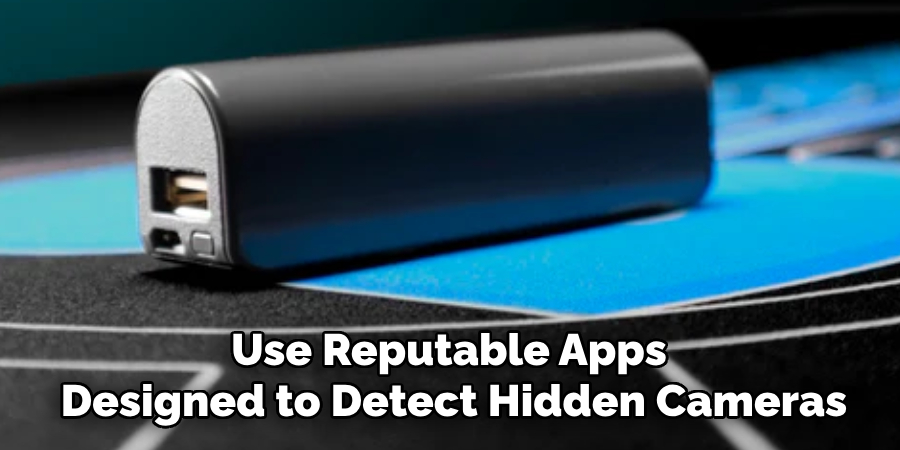
How to Block Audio Recording Devices: Soundproofing and Acoustic Treatment
Explanation of Soundproofing and Its Effectiveness in Blocking Audio Recording
Soundproofing is the process of reducing the transmission of sound between different spaces. It is essential in environments where privacy and confidentiality are paramount, as it significantly diminishes the chances of audio recording devices capturing intelligible conversations. By obstructing the travel of sound waves, soundproofing methods make it difficult for unauthorized recording devices to pick up audio, effectively safeguarding sensitive information.
Step-by-Step Guide to Soundproofing a Room
- Installing Acoustic Panels and Foam:
- Select Appropriate Panels: Choose high-density acoustic panels and foam that absorb sound. These are often made from materials such as fiberglass, mineral wool, or specialized acoustic foam.
- Strategic Placement: Install the panels on walls, particularly around areas where sound reflections occur, such as behind speakers or around conversation areas. Ensure that the panels are evenly distributed for optimal effect.
- Ceiling Treatment: Consider acoustic ceiling tiles to prevent sound from traveling upward or reverberating around the room.
- Using Heavy Curtains and Carpets to Absorb Sound:
- Heavy Curtains: Hang thick, heavy curtains over windows to block sound from both entering and leaving the room. Velvet or blackout curtains are particularly effective.
- Carpets and Rugs: Place plush carpets or area rugs on the floor to absorb sound, especially on hard surfaces like wood or tile. For added effectiveness, combine carpets with carpet pads.
- Sealing Gaps and Cracks in Walls, Doors, and Windows:
- Identify Gaps: Use a flashlight to identify any gaps or cracks in walls, doors, and windows that could allow sound to pass through.
- Seal Cracks: Apply acoustic sealant or caulking to fill in the gaps. Weatherstripping around doors and windows can also help in sealing these spaces effectively.
- Door Sweeps: Install door sweeps along the bottom of doors to prevent sound leakage.
- Ensuring Optimal Soundproofing for Privacy:
- Double-Check Installations: Verify that all soundproofing materials are securely installed and that no gaps remain unsealed.
- Conduct Sound Tests: Test the effectiveness of the soundproofing by playing audio at different volumes and checking for sound leaks outside the room.
- Regular Maintenance: Periodically inspect the soundproofing measures to ensure they remain effective, particularly if any structural changes occur in the space.
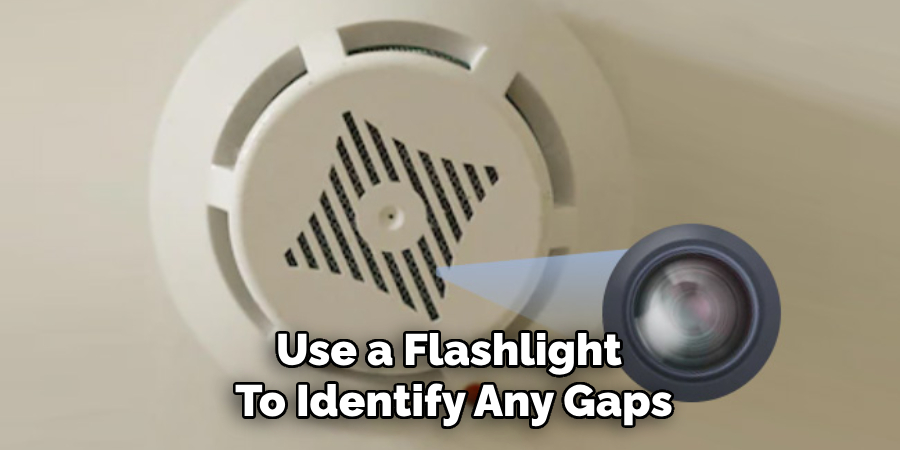
By following these steps, you can enhance the soundproofing of any room, thus ensuring a private and secure environment where the risk of unauthorized audio recording is significantly minimized.
How to Block Audio Recording Devices: Using White Noise Generators and Audio Jammers
Explanation of How White Noise Generators and Audio Jammers Work
White noise generators and audio jammers effectively safeguard private conversations from unauthorized recording. White noise generators emit consistent noise across all audible frequencies, which can mask conversations by creating a blend of sounds that make it difficult to discern individual voices.
On the other hand, Audio jammers disrupt recording devices by emitting signals that can interfere with the microphones’ ability to capture clear audio. These tools create a barrier of auditory “clutter” that prevents eavesdroppers from effectively recording or understanding conversations.
Step-by-Step Guide to Using White Noise Generators
- Placing the Generator in the Room:
- Strategic Positioning: Place the white noise generator centrally in the room or near the area where conversations typically occur. This ensures an even distribution of white noise across the space.
- Avoiding Obstructions: Ensure the device is not obstructed by furniture or other objects that could prevent the sound waves from spreading effectively.
- Adjusting the Volume and Frequency to Mask Conversations:
- Optimal Volume: Adjust the volume of the generator to a level that effectively masks conversations without being too loud or intrusive. The noise should be loud enough to blend with the conversation but comfortable enough for people in the room.
- Frequency Settings: Some advanced white noise generators allow you to adjust the frequency settings. Set the frequency to cover a broad range to ensure it masks all speech frequencies.
- Step-by-Step Guide to Using Audio Jammers
- Placing the Jammer Near Suspected Recording Devices:
- Ideal Placement: Position the audio jammer close to where hidden recording devices might be located, such as near electrical outlets, light fixtures, or other suspicious areas.
- Multiple Locations: If the area is large, use multiple jammers to effectively cover different zones.
- Activating the Jammer to Disrupt Audio Recording:
- Power On: Turn on the audio jammer and set it to the appropriate signal strength. Ensure it is actively emitting interference to block recording devices.
- Test Effectiveness: Conduct tests to verify that the jammer effectively disrupts audio recordings. Playback potential recordings to ensure they are unintelligible.
- Legal Considerations and Potential Limitations
While white noise generators and audio jammers can significantly enhance privacy, it is essential to be aware of legal considerations. Audio jammers, in particular, are regulated in many jurisdictions, as they can interfere with legitimate communication devices. Before deploying these devices, check local laws and regulations to avoid potential legal repercussions. Additionally, while effective, these tools are not foolproof; sophisticated surveillance equipment may sometimes circumvent their effects, so combining multiple security measures is recommended for optimal privacy protection.
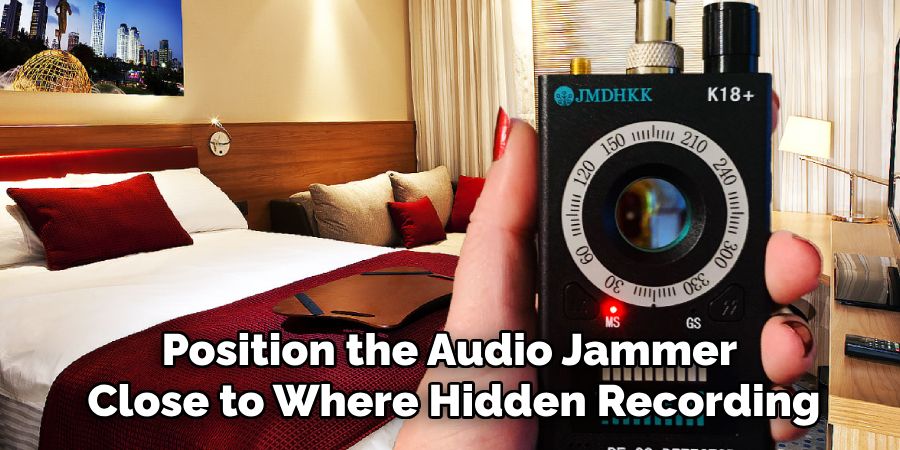
Electronic Countermeasures
Overview of Advanced Electronic Countermeasures for Blocking Audio Recording
Advanced electronic countermeasures are designed to prevent unauthorized audio recording through sophisticated technology. These measures include using ultrasonic jammers, which emit high-frequency sound waves to disrupt microphone functionality, and RF (radio frequency) jammers, which block wireless recording devices by interfering with their communication signals. Using these tools, you can create a secure environment impervious to unauthorized eavesdropping.
Using Ultrasonic Jammers to Interfere with Microphones
Ultrasonic jammers produce inaudible high-frequency sound waves that overwhelm and disable microphones, making it difficult for recording devices to capture clear audio. These jammers are particularly effective when maintaining audio confidentiality, which is crucial, such as in boardrooms and private offices.
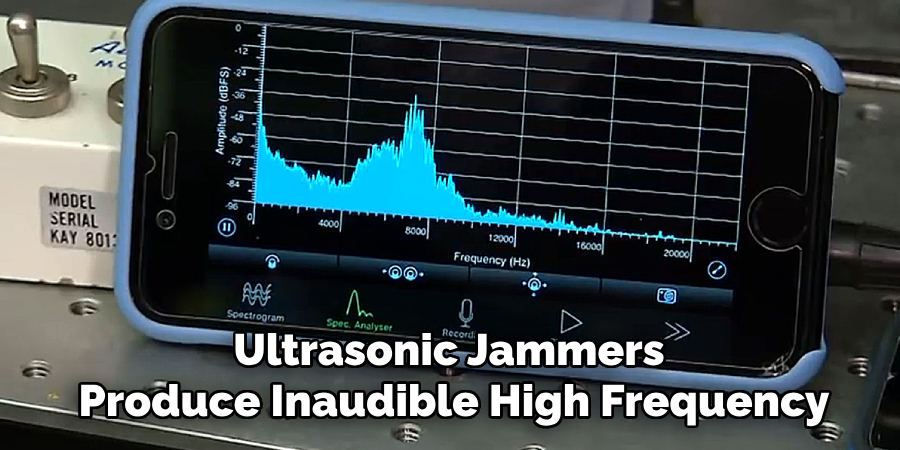
Employing RF Jammers to Block Wireless Recording Devices
RF jammers obstruct the signals transmitted by wireless recording devices, such as hidden cameras and microphones, which rely on Wi-Fi, Bluetooth, or cellular networks. By emitting radio frequency interference, these jammers prevent the recording devices from transmitting data, thereby ensuring the area’s privacy.
Step-by-Step Guide to Deploying Electronic Countermeasures
- Setting Up the Devices:
- Ultrasonic Jammers: Place ultrasonic jammers in locations where conversations occur, ensuring they are angled to cover the entire room.
- RF Jammers: Position RF jammers near potential threats like Wi-Fi routers or areas with high electronic activity.
-
- Testing Their Effectiveness:
- Simulate Recording Attempts: Use various recording devices to test if the jammers effectively disrupt audio recordings.
- Adjust and Retest: Modify the placement or settings of the jammers as needed to maximize their disruption capabilities.
-
- Ensuring Compliance with Legal Regulations:
- Understand Local Laws: Research the legal restrictions regarding using jammers in your jurisdiction.
- Adhere to Permits and Guidelines: To avoid legal issues, ensure that you have the necessary permissions and that your use of jammers aligns with all applicable laws.
- By following these steps, you can effectively deploy electronic countermeasures to protect sensitive conversations from unauthorized recording while ensuring compliance with legal requirements.
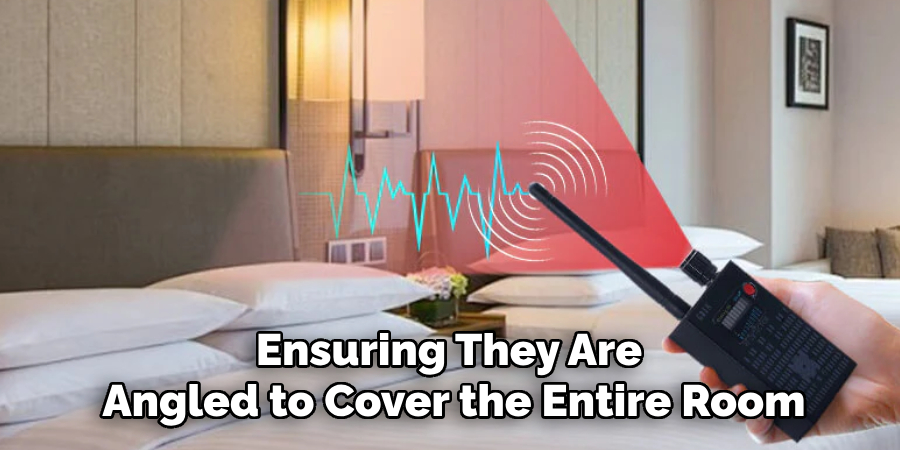
Physical Barriers and Isolation Techniques
Using Physical Barriers to Create Secure Areas
Physical barriers effectively ensure privacy by limiting conversations’ exposure to unwanted listeners. Secure areas, such as soundproof booths or specially designated rooms, provide a controlled environment where sensitive information can be shared without fear of eavesdropping.
Step-by-Step Guide to Creating an Isolated Area
- Constructing a Soundproof Booth:
- Selecting Location: To minimize noise interference, choose a location away from high-traffic areas.
- Building the Structure: Use soundproof materials such as acoustic foam, insulated walls, and double-glazed windows to construct the booth.
- Sealing Entry Points: Ensure that all doors, windows, and ventilation points are tightly sealed to prevent sound leakage.
- Using Heavy Furniture and Materials to Create Barriers:
- Strategic Placement: Arrange heavy furniture like bookshelves and cabinets along the walls to absorb and block sound waves.
- Layering Materials: Use thick curtains, carpets, and wall panels to enhance sound insulation further.
- Ensuring Maximum Privacy Within the Isolated Area:
- Adding Acoustic Panels: Install acoustic panels on the walls and ceiling to absorb residual sound.
- Sound Testing: Conduct tests to verify the effectiveness of the soundproofing and make adjustments as necessary to ensure optimal privacy.
Legal and Ethical Considerations
Understanding the Legal Implications of Using Audio Jammers and Other Devices
The deployment of audio jammers and other countermeasures must be approached with a clear understanding of local laws and regulations. Many jurisdictions regulate or prohibit the use of such devices due to their potential to interfere with legitimate communications. Researching and understanding the specific legal framework in your area is crucial before implementing these tools. Failing to comply with legal requirements can lead to severe penalties, including fines and legal action.
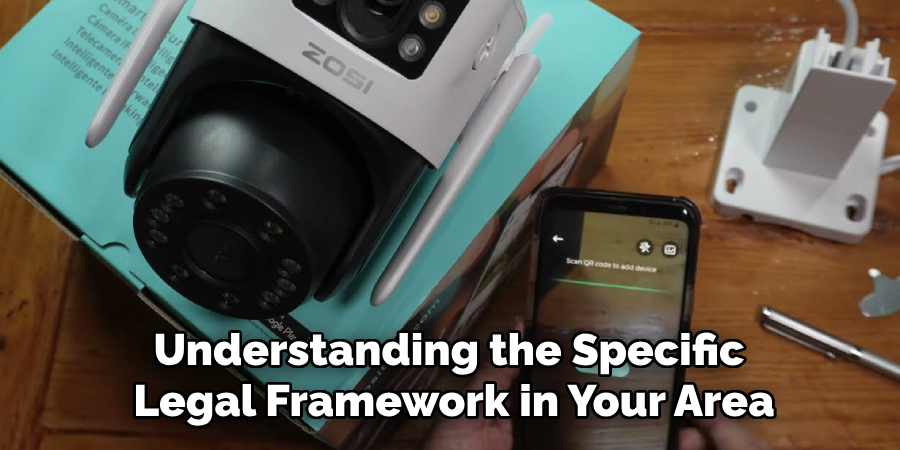
Ensuring Compliance with Local Laws and Regulations
To ensure compliance, necessary permits must always be obtained, and regulatory authorities must adhere to guidelines. Conduct thorough reviews of the laws governing the use of electronic countermeasures and, where necessary, seek legal counsel to navigate complex legal landscapes. Maintaining detailed documentation of compliance efforts can also serve as evidence of due diligence in the event of a dispute.
Ethical Considerations in Protecting Privacy While Respecting Others’ Rights
While protecting privacy is paramount, respecting others’ rights and freedoms is equally important. The use of audio jammers should be balanced against the ethical responsibility to avoid unnecessary disruption of communication channels that others may rely on. Employ these measures judiciously, ensuring they are only activated in scenarios where privacy is legitimately at risk. Ethical usage promotes trust and upholds the integrity of privacy protection efforts.
Conclusion
In summary, various methods and strategies can effectively block audio recording devices, ensuring the protection of sensitive information. Employing ultrasonic and RF jammers disrupts the operation of recording devices, while physical barriers like soundproof booths and heavy materials create secure environments. The importance of privacy and security in today’s world cannot be overstated, particularly in settings where confidential discussions are routine.
However, knowing how to block audio recording devices also demands a balance between safeguarding privacy and respecting legal and ethical boundaries. Complying with local laws and ethical guidelines is crucial to avoid potential legal repercussions and maintain the integrity of privacy protection efforts. By thoughtfully applying these countermeasures, organizations and individuals can protect their private conversations while upholding the rights of others.
About
Safety Fic is a distinguished figure in the world of Diy design, with a decade of expertise creating innovative and sustainable Diy solutions. His professional focus lies in merging traditional craftsmanship with modern manufacturing techniques, fostering designs that are both practical and environmentally conscious. As the author of diy, Safety Fic delves into the art and science of Safety Fic-making, inspiring artisans and industry professionals alike.
Education RMIT University
(Melbourne, Australia) Associate Degree in Design (Safety Fic) Focus on sustainable design, industry-driven projects, and practical craftsmanship. Gained hands-on experience with traditional and digital manufacturing tools, such as CAD and CNC software.
Nottingham Trent University
(United Kingdom) Bachelor’s in diyfastly.com and Product Design (Honors) Specialized in product design with a focus on blending creativity with production techniques. Participated in industry projects, working with companies like John Lewis and Vitsoe to gain real-world insights.
Publications and Impact
In diy, Safety Fic his insights on indoor design processes, materials, and strategies for efficient production. His writing bridges the gap between artisan knowledge and modern industry needs, making it a must-read for both budding designers and seasoned professionals.
